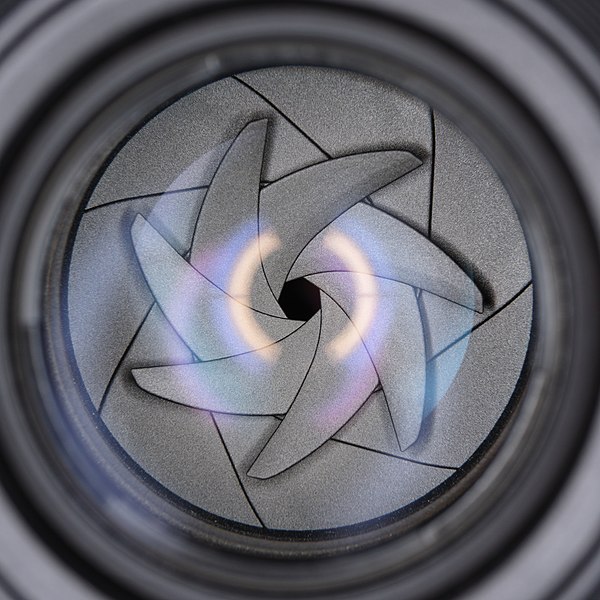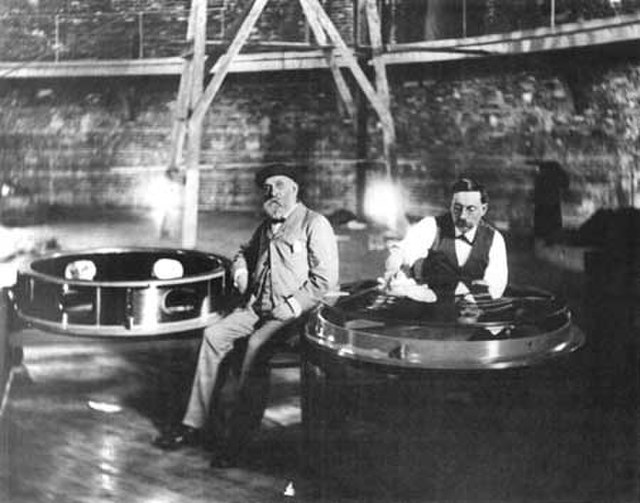A pinhole camera is a simple camera without a lens but with a tiny aperture —effectively a light-proof box with a small hole in one side. Light from a scene passes through the aperture and projects an inverted image on the opposite side of the box, which is known as the camera obscura effect. The size of the images depends on the distance between the object and the pinhole.
A home-made pinhole camera lens
A home-made pinhole camera (on the left), wrapped in black plastic to prevent light leaks, and related developing supplies
An example of a 20-minute exposure taken with a pinhole camera
A photograph taken with a pinhole camera using an exposure time of 2s
In optics, the aperture of an optical system is a hole or an opening that primarily limits light propagated through the system. More specifically, the entrance pupil as the front side image of the aperture and focal length of an optical system determine the cone angle of a bundle of rays that comes to a focus in the image plane.
Different apertures of a lens
In biology, the pupil (appearing as a black hole) of the eye is its aperture and the iris is its diaphragm. In humans, the pupil can constrict to as small as 2 mm (f/8.3) and dilate to larger than 8 mm (f/2.1) in some individuals.
A camera aperture
Alvin Clark polishes the big Yerkes Observatory Great Refractor objective lens, with 40 inches 102 cm across, in 1896.








